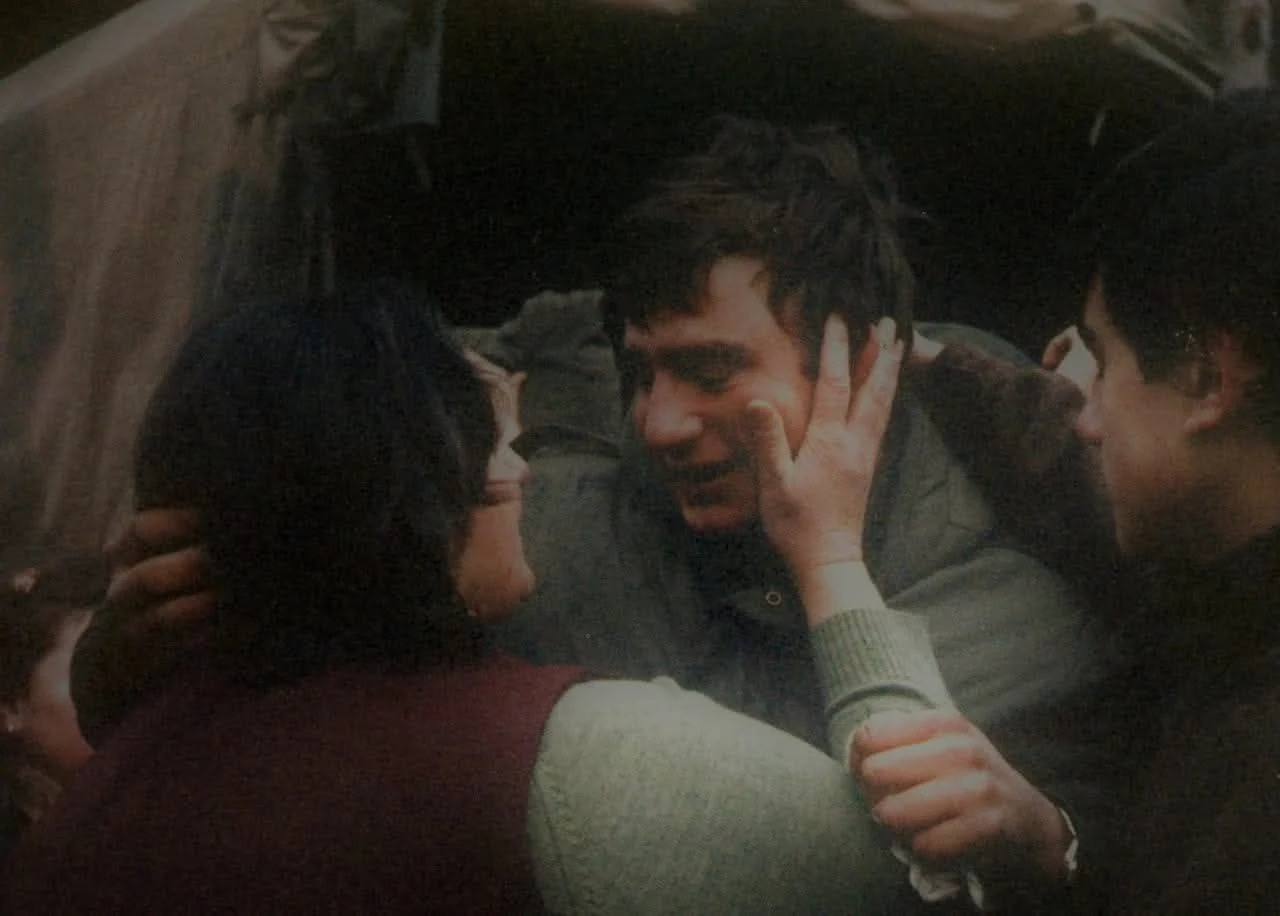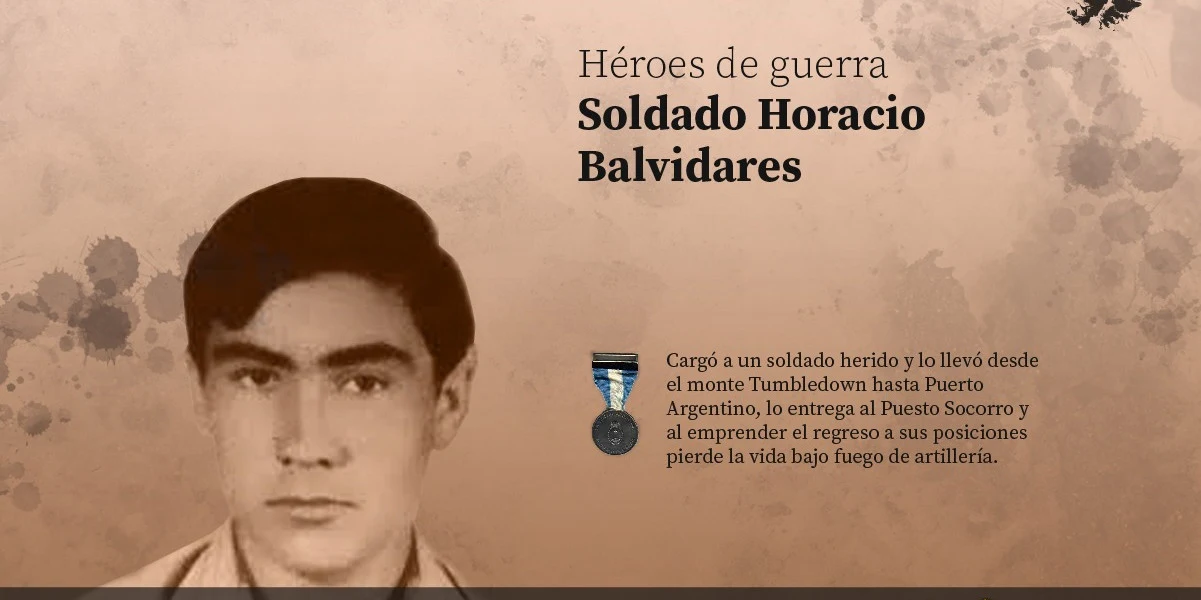The day Roca saved a man sentenced to death half an hour before the execution
The general was president and granted a pardon to a soldier imprisoned for attacking a superior who had mistreated him. The details of the decision.
By Luciana Sabina || Infobae

Evaristo Sosa, the soldier “saved” by Julio A. Roca
In January 1902, the country was on edge for days following the death sentence of soldier Evaristo Sosa, a humble-born serviceman who, after being subjected to mistreatment, attempted to take the life of a superior. The press captured the social outrage sparked by the sentence, whose outcome was worthy of a suspense novel.
On January 3, 1902, Sosa, a volunteer soldier with six years of service in the national army, was arrested drunk in a store, an act that, according to reports of the time, "caused disturbances." He was immediately taken to Campo de Mayo (Argentine Army Headquarters). There, he was placed under the charge of Second Lieutenant Ramírez, whose first name, curiously, was not mentioned in the accounts of those years. As punishment, Sosa was sentenced to a “plantón” — the military obligation to stand guard without relief — for six hours, although he only completed three.

The "Sosa Case" caused a great stir in its time
After serving his punishment and being released, the condemned Sosa became enraged. He then took his regulation weapon and, in the early hours of January 4, went to the room of the second lieutenant, who was dozing in a rocking chair. With almost no words exchanged, he fired his Mauser carbine at him, destroying part of the officer's face. Sosa was imprisoned without resistance and stated that he attacked the officer because he had punished him in a "demeaning manner." Ramírez, meanwhile, was transferred to the Military Hospital, where he managed to recover. For this attack, the assailant ended up shackled and brought before a military tribunal, which sentenced him to death.
The sentence was handed down on January 17 and was to be carried out the following day. Soon, society mobilized to prevent it, aware that Sosa's reaction was the result of the well-known mistreatment inflicted on lower-ranking members of the Army. A group of Buenos Aires women even went to request a pardon from then-President Julio Argentino Roca. However, they received no response.

Meanwhile, the press denounced the situation nationwide, highlighting how abhorrent it was. While the death penalty was legal in the country, it caused immense social rejection.
As the hours passed, the impotence of many grew. That night, Evaristo Sosa did not sleep. At 5 a.m., they came for him to begin the routine ordeal to which prisoners were subjected before being executed. His composure did not falter, despite the terrible night he had spent under the weight of his sentence.
He was placed "en capilla" under a tent, a concept that warrants explanation. The term refers to the space occupied by any condemned prisoner while awaiting execution. As historian Carlos Riviera points out, it originates "from a tradition at the ancient University of Salamanca [Spain], where doctoral candidates, the day before defending their thesis before the tribunal, had to confine themselves for an entire day in the chapel of Saint Barbara in the old cathedral of Salamanca to seek enlightenment from the Holy Spirit. There, they had to prepare in complete solitude, as even their meals were passed to them through a small window."

Sosa was placed “en capilla” during the night he awaited execution
Returning to Sosa, half an hour after being "placed en capilla," he was visited by a priest who held Mass near the tent. The soldier, deeply moved, took Communion, impressing the few witnesses present with his demeanor. Shortly after, he received visits from some comrades to bid farewell and find comfort in the face of his imminent end. One of them strummed a melancholic tune on a guitar and sang its verses, further unsettling the condemned man.
As emotion overtook the small group of soldiers, moving everyone to tears, the surroundings were filled with noise and activity. The magazine Caras y Caretas covered the event in detail. Among other things, it reported that Commander Rostagno, the military secretary to the President of the Republic, arrived "carrying a note for the senior commander of the forces."
"‘The pardon!’ murmured most, as the rumor spread throughout the camp, even though preparations for the execution continued, keeping Sosa isolated," the magazine recounted.
They were not mistaken. At the very last moment, Julio Argentino Roca decided to grant the longed-for pardon. However, the soldier misunderstood the situation and cried out in despair: "I have half an hour to live!"

Roca decided to pardon the prisoner
But the panic lasted only a few minutes, and Sosa regained his composure upon seeing a group of commanders and officers arrive at his tent. Caras y Caretas reported: "They were the bearers of the good news, who at first merely hinted at a glimmer of hope to avoid what was feared (...) They allowed Lieutenant García to notify the prisoner of the commutation—as he had informed him of the sentence the day before. The poor soldier collapsed onto a bench, seized by a terrible nervous breakdown that alarmed the doctors, making them fear a cardiac syncope. He registered 120 beats per minute initially, which then dropped so quickly that ether inhalations had to be applied to help him recover."
"The tent was then cleared, and Sosa asked to be left alone for a moment. Shortly after, he fell into a heavy, leaden sleep. Meanwhile, the entire camp showed visible signs of relief, with the good news spreading among commanders, officers, and soldiers alike. More than 500 people from the capital and nearby towns had come to Campo de Mayo, and all of them carried away the joyful impression of the atmosphere that, just moments earlier, had been prepared for a grim execution," the publication detailed.

Evaristo, a native of the province of Mendoza, was married to Teresa Espíndola and had a young son, nine years old. It is easy to imagine the happiness of them all.
Undoubtedly, the person most surprised by the news of the commutation of the sentence was the condemned man himself, who experienced an episode of mental disarray just a few hours later.
The entire country had anticipated Roca's intervention. While Sosa's actions were undeniably criminal, many regarded them as a natural reaction to the mistreatment soldiers faced at the time. Furthermore, the Supreme Military Council that issued the sentence disregarded the involvement of the Ministry of War, stating it was beyond its jurisdiction. This was seen as a significant affront to the Executive Branch.

Despite receiving the news with relief, public opinion criticized Roca for waiting until the last moment instead of acting sooner.
"It would have been more humane to act earlier," Caras y Caretas remarked at the time, "since the prisoner, as we said from the start, worn down by so many emotions and convinced that his offense would not be met with mercy, has experienced a significant physical and moral decline. Clear signs of mental distress had been evident for days, and on Friday morning, after learning of the commutation, it was necessary to transfer him to the Military Hospital."
Indeed, under such extreme suffering, Sosa lost his sanity and spent months hospitalized. He deluded himself into thinking he had bullets in his chest, believing he had been executed by firing squad.
Once he recovered, he was imprisoned again. In 1909, he was transferred to the military prison in Ushuaia, where he worked as a muleteer. From that point on, his name faded into the pages of oblivion.

But this was not the only person from Mendoza whom Roca pardoned in 1902. Another singular episode occurred in July of that year.
In Mendoza, Juan Rodríguez was imprisoned for murdering a pregnant woman and her husband to steal a meager sum of money. The crime, which took place in the department of Rivadavia, caused great public outcry. From the presidency, a telegram arrived approving the execution of the accused, with the support of the governor and the Mendoza judiciary. The shock in Mendoza and the rest of the nation was indescribable when, through another communication, General Roca himself declared the initial telegram to be fraudulent.
It was later revealed that the author of the telegram was none other than his own son and personal secretary, Dr. Julio A. Roca. The improper and informal nature of this procedure put both the president and the Mendoza governor under scrutiny. As a result, Rodríguez’s life was spared.
Beyond these particular cases, it is important to highlight the strong societal rejection of the death penalty. At the beginning of the 20th century, the liberal press referred to it as "an act of barbarity, far removed from the civilized society we aspire to be." Years later, socialists, particularly Alfredo Palacios, joined the fight for its abolition.
Finally, in 1922, with the reform of the Penal Code, the death penalty was abolished in Argentina.




























